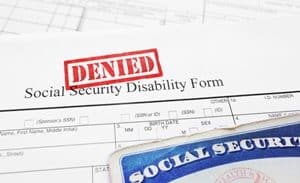Yes, your daughter may qualify for Social Security disability benefits even if her IQ is not quite low enough to qualify her as having an intellectual disability. However, building a compelling case for Social Security disability benefits will involve a lot of legwork and a thorough knowledge of how the Social Security disability system works.
If your daughter’s IQ is between 71 and 84, she is in the range of borderline intellectual functioning (BIF). People with BIF do not have an intellectual disability for purposes of Social Security disability benefits, and if a lower-than-average IQ score is her only issue, then she won’t be able to obtain benefits.
However, if your daughter has mental functional capacity issues that extend beyond her IQ score, she may qualify for Social Security disability benefits.
Before you have your child apply for Social Security disability, it is important to gather all of the information that will be relevant to her application, including:
You may also want to seriously consider hiring an experienced disability attorney to help you navigate the challenges of proving your daughter’s disability claim in spite of these special circumstances. To learn more, call Morgan Weisbrod today. Our compassionate and skilled team is here to answer your questions and to help your daughter get the disability benefits she deserves.

 While it’s true that providing the Social Security Administration with a Residual Functional Capacity (RFC) form completed by your treating physician is not required as part of your application for Social Security disability benefits, the form plays a crucial role in the decision process, and will be completed either way. If you haven’t provided a form from your doctor, then one will be filled out at Disability Determination Services (DDS) by a medical consultant who will work off your records.
While it’s true that providing the Social Security Administration with a Residual Functional Capacity (RFC) form completed by your treating physician is not required as part of your application for Social Security disability benefits, the form plays a crucial role in the decision process, and will be completed either way. If you haven’t provided a form from your doctor, then one will be filled out at Disability Determination Services (DDS) by a medical consultant who will work off your records.
Although your medical records will contain comprehensive documentation of your disabilities, they will not contain a full picture of the impact your disabilities have on your ability to consistently perform the functions necessary to maintain employment. That kind of insight can only come from a medical professional who has an ongoing relationship with you. This is why significant weight is given to an RFC form completed by your physician.
So while it’s tempting to “let your medical records speak for themselves,” especially if your doctor charges a fee to complete the RFC form, it’s in your best interest to have your doctor fill out the form. Typically, the fee charged by your doctor is small and the benefit to having your doctor complete the form is significant.
Each decision—such as whether to have your doctor complete the RFC form—can have important consequences in your eligibility determination. Accordingly, it is important to make sure that you are making the right decisions for your claim. You can begin getting the advice you need about the Social Security disability application process or appeals process now by contacting our board-certified disability attorneys via this website or by phone. Additionally, we invite you to download a free copy of our book, Social Security Disability: What You Need to Know, for more important information.

 Generally, there are four different levels of appeal when it comes to your Social Security disability claim. You may have the right to appeal your Social Security disability claim in a:
Generally, there are four different levels of appeal when it comes to your Social Security disability claim. You may have the right to appeal your Social Security disability claim in a:
Although this means, in theory, that you have four different opportunities to appeal your case, it does not necessarily mean that you can or should appeal at each level. In most cases, claimants who have their initial appeal denied will appeal twice: they will file a request for consideration (the Social Security Administration (SSA) only grants about five percent of these requests), and they will go to an administrative law judge hearing.
The Appeals Council selects disability claim cases to review—and often it chooses cases in which an interesting issue is raised or in which substantial evidence has come to light. Only a handful of cases find success at this level.
After the Appeals Council, you may file a lawsuit against the SSA in federal court. Although this option gives you a better chance at success than the Appeals Council, it can be a long and possibly expensive process.
Your aim should be to appeal as few times as possible because your ultimate goal is to get the fair Social Security disability benefits you deserve quickly. Thus, it is important to put in as much work as you can to get your application approved the first time or at the next level of appeal so that you can avoid the time, the expense, and the frustration of further appeals.
To find out more about the appeals that you should file and about how to protect your rights, please contact a board certified disability lawyer today for more information. We will help you make the right decisions about your claim.

Yes, you can receive Social Security disability benefits if you have been diagnosed with a terminal illness and you meet the requirements of the Social Security disability program. In fact, your application for benefits may be expedited through the Social Security Administration’s terminal illness program known as TERI.
According to the Social Security Administration, you may be eligible for TERI if you are diagnosed with “a medical condition that is untreatable and expected to result in death.” Some conditions, such as amyotrophic lateral sclerosis (ALS), may automatically classify your application as a TERI case. Other conditions that are often added to the TERI program include some forms of cancer, chronic heart failure, fatal genetic issues in newborns, and those on life-sustaining devices such as a ventilator.
You may claim that you have such a condition in your Social Security disability application, or the Disability Determination Services (DDS) may identify your application as a TERI case based on the content of your application.
DDS is not required to tell you that your case is being considered as a TERI case and is specifically instructed by the Social Security Administration not to use the word terminal in anything that is made available to you.
That is the responsibility of DDS management and the Social Security Administration’s field offices. DDS management is supposed to follow up on a TERI case every 10 days until an eligibility determination is made. If a determination is not made within 30 days, the field office should become involved.
If you are suffering from a terminal illness and you qualify for Social Security disability, you have the right to have your application expedited and to start receiving benefits as soon as possible. An experienced Social Security disability lawyer can help you get the benefits you deserve. Please contact us today to learn more.


Often, a disability impacts more than just your ability to work. It could also impact your ability to manage your money or to pay your bills on time, for example. In these cases, the Social Security Administration allows Social Security disability representatives to have a representative payee appointed.
A representative payee will receive a Social Security disability recipient’s monthly benefits and use that money for the benefit of the Social Security disability recipient. Specifically, the representative payee will use the money from the disability payments to pay for the Social Security disability recipient’s rent, mortgage, utilities, food, clothing, personal care and home care items, medical expenses, and to cover any other necessary expenses. Extra money can be used on entertainment, education, or home improvements for the person with the disability or can go into a savings account for the benefit of the person with a disability. A payee should never use the disability payments for something other than the benefit of the Social Security recipient.
A payee is usually a family member, partner, close friend, or loved one. However, payees are sometimes a nursing home, an adult care facility, or another institution.
If you think your loved one needs a representative payee and you are willing to serve in that role, you should:
Do you have questions about acquiring Social Security disability benefits or selecting a representative payee? Contact our experienced Social Security disability lawyers today to schedule an initial consultation and to get the advice you need to move forward.

 In 2015 (the most recent year for which statistics are available), 15 million people, or 10.1 percent of the American workforce, was self-employed. Texas was right in line with the national average with 10% of the workers in this state being self-employed, according to the Bureau of Labor Statistics.
In 2015 (the most recent year for which statistics are available), 15 million people, or 10.1 percent of the American workforce, was self-employed. Texas was right in line with the national average with 10% of the workers in this state being self-employed, according to the Bureau of Labor Statistics.
If you are self-employed or work as an independent contractor or freelancer, do you still qualify for Social Security disability benefits? And what happens if you suffer from an injury, illness, or health condition that prevents you from continuing to work for an extended period of time?
Whether or not you are eligible for Social Security disability payments when you are self-employed depends on several factors, including:
When you are employed by another entity, your Social Security taxes are usually taken out of your paycheck. When you are self-employed, you are responsible for reporting your income and paying your Social Security taxes. As long as you pay in to the system, you have the same right to Social Security disability benefits as workers who are employed by others.
For people who are employed by others, the Social Security Administration uses a specific dollar amount to determine if they are engaged in substantial gainful activity and, therefore, able to work. The same rules do not apply to the self-employed, however. Instead, the Social Security Administration will perform a countable income test to determine if you engage in substantial gainful activity.
You are entitled to a trial work period, however, just like people who are employed by others.
Do you have questions about self-employment and disability benefits? Call our experienced Social Security disability lawyers today for more information and download a FREE copy of our report, Social Security Disability: What You Need to Know.


If you are receiving Social Security disability benefits based on your own work history, your divorce will have no bearing on your eligibility for Social Security disability benefits. These disability benefits depend upon your work history and your contribution to the Social Security fund, not your family or your income. Thus, if you were eligible for Social Security disabilitybenefits when you were married, you will remain eligible for such payments after your divorce.
The calculation of your payments will not change, and if you divorce without any alimony or child support obligations, the amount you receive will not change. However, if you are required to pay alimony or child support, your Social Security disability payments may be garnished to satisfy those legal obligations.
In limited circumstances, the Social Security Administration allows spouses of workers eligible for Social Security disability to also collect benefits. Generally, a spouse may be eligible for Social Security disability if the spouse is:
After a divorce, you may continue to receive Social Security disability benefits as an ex-spouse if:
If your children are receiving Social Security disability dependent benefits, your divorce is unlikely to impact those benefits.
Other Social Security programs, including supplemental security income, have different rules about how divorce impacts payments. Thus, it is important to know exactly how your benefits, and those of your family members, will be impacted by a divorce. To find out more, please contact Morgan Weisbrod today to schedule a free consultation with an experienced Social Security disability lawyer.

 If you receive Social Security disability benefits, those benefits may be taxable. Social Security disability is not a need-based program. Therefore, there are often significant differences in recipients’ taxable income even if they are not working due to a disability, and some people end up paying taxes while others do not.
If you receive Social Security disability benefits, those benefits may be taxable. Social Security disability is not a need-based program. Therefore, there are often significant differences in recipients’ taxable income even if they are not working due to a disability, and some people end up paying taxes while others do not.
According to the Social Security Administration, approximately 33% of Social Security disability recipients pay taxes on their benefits.
Your responsibility to pay taxes—and the amount of those taxes—depends on your total income as well as the income of your spouse. According to the Social Security Administration:
Income could include wages, interest earned, or dividends. The percentage of your benefits that are taxed will depend on the amount of income you must declare on your tax returns. Your tax rate on Social Security disability benefits will be the same as it is on your other types of income.
If you reside in Texas, your Social Security disability benefits will not be subject to a state income tax because the state does not currently impose a state income tax.
It is very important that you list your Social Security benefits as well as all other sources of income when you pay taxes. If you have questions about your Social Security benefits and your taxes, be sure to speak with a tax advisor or accountant. If you have questions about your Social Security disability claim, we encourage you to contact our experienced Social Security disability attorneys for more information.

At first glance, there is no way to speed up your Social Security disability benefits claim. There is a backlog of cases, and you have to wait in line for your case to be heard. just like everyone else.
However, you should keep a few things in mind during your application process that could potentially save you months of waiting. Specifically, you can:
You become eligible for Social Security disability benefits in the sixth full month after your disability onset date. Our goal is to help you get the Social Security disability benefits you deserve as close to your eligibility date as possible so that you can start receiving the benefits to which you are legally entitled. To learn more about how we can help you, please schedule an initial consultation with us today. You can reach us by phone or via this website at your convenience.

Every case is unique. However, for some Social Security disability applicants, the time that it takes to get Social Security disability benefits may seem exceedingly long. Even if your application is approved on the first try (and most are initially denied) the wait can be several months long.
The Social Security Administration (SSA) will determine the date on which your disability began. You only become eligible for benefits in the sixth full month following that date. The first five months are considered a waiting period and, even if your application was to be approved during that time, you would not be eligible for Social Security disability benefits.
Of course, in some cases, the waiting time for Social Security disability benefits can be much longer. Your benefits may be delayed, for example, if your initial application for benefits is denied. Two-thirds of Social Security disability applicants have their initial applications denied. You have the right to appeal the denial; however, it could take over a year to finish the process and to get the Social Security disability benefits you deserve.
The more you know about how to complete your paperwork and how to successfully apply for benefits, the more likely you are to secure disability benefits sooner.
Additionally, there is a group of 100 different diseases and conditions on the SSA’s Compassionate Allowances list. If you are suffering from one of these illnesses, your application for benefits can be fast-tracked.
Our board-certified disability lawyers are committed to helping our clients get the benefits they deserve as quickly as possible. We will do our best to shorten your wait time so that you can start receiving the benefits you need. For more information about how we may help you, please start a live chat with us now or call us directly to schedule an initial consultation.

© 2025 Morgan Weisbrod, All Rights Reserved, Reproduced with Permission Privacy Policy | Site Map